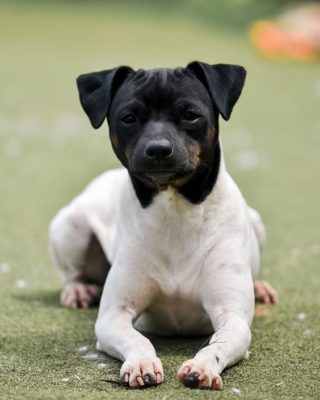Japanese Terrier

The Japanese Terrier is an energetic, agile, and active breed. They are cheerful, affectionate, and intelligent. You should not be surprised if they are happy to jump on their owner’s lap to get attention and cuddle.
Table of Contents
Breed Information
| Another Name | Mikado Terrier, Oyuki (snowy) Terrier |
| Origin | Japan |
| Height | Males 30-33 cm Females 27-30 cm |
| Weight | Males 4-6 kg Females 3-4 kg |
| Fur | Tough, short |
| Color | White, black or tricolor |
| Lifespan | 10-13 years |
| FCI Classification | Terriers |
| Group | Watchdogs, hunting dogs |
| Price | $800-1200 |
Breed Photos
Origin History
The Japanese Terrier is a scarce breed of dog even in its native country. It is probably descended from sleek Fox Terriers, which arrived here with Dutch sailors in the 18th century and then crossed with local Japanese dogs. It was initially bred for hunting vermin. Planned breeding began in 1920, and in 1930 the Japanese Terrier was accepted into the Japanese Kennel Club. The breed nearly became extinct during World War II. It can now be found in small numbers both inside and outside of Japan.
Appearance
The Japanese Terrier is a hardy, sturdy dog of small size. A notable highlight of the breed is the dark head against the white torso. An adult male Japanese Terrier reaches 33 centimeters at the withers, and a female reaches 25 centimeters at the withers. Males weigh up to six kilograms and females up to four kilograms. The breed has a short, stiff coat. The color can be white, black, or tricolor.
Character
The Japanese Terrier is an energetic, agile, and active breed. They are cheerful, affectionate, and intelligent. You should not be surprised if they are happy to jump on their owner’s lap to get attention and cuddle.
Japanese Terriers don’t like to be left alone for long periods. So, if the owner works a lot, the dog will get homesick. Japanese Terriers are very loyal and loyal to their owners.
Dogs of this breed are more prone to the attachment to one person in the family and can become overly possessive of a particular person. They will bark irritably if their beloved owner ignores them.
A stressful environment or improper care can negatively affect these dogs. Japanese Terriers are wary of strangers but are not aggressive. Instead, they become more alert and wary of the stranger.
Care
The Japanese Terrier molts once a year. The dog has a short, stiff coat. Consequently, the Japanese Terrier requires minimal care and does not need professional help. Protecting the Japanese Terrier’s ears from infection should be a priority. Fortunately, this is very easy to do. Wipe the ears with a damp cloth or cleaning solution from time to time. As for the teeth, you are brushing them two or three times a week is recommended. It is important to be extremely careful when choosing the right products for your dog’s grooming. The Japanese Terrier’s nails should be trimmed very carefully because it is possible to catch nerve endings.
Training
Training Japanese Terriers is relatively easy. The owner needs to behave gently, confidently, consistently, and firmly. Also, harshness should be avoided, as animals do not respond positively to harsh treatment. This breed loves to learn and, more importantly, perform tricks and commands. The Japanese Terrier needs socialization. The best time for this is puppyhood. It has been observed that well-socialized Japanese Terriers are more reliable, confident, and happier.
Common Diseases
The Japanese Terrier is prone to these diseases:
- glaucoma;
- cataract;
- heart problems.
Nutrition
Japanese Terriers require one-half to one-and-a-half cups of dry food. Instead of one large meal, owners should feed their pets twice a day. Preferably once in the morning and once in the evening. The amount of food depends on the dog’s size, age, metabolism, activity level, and health. The Japanese Terrier should have constant access to drinking water.
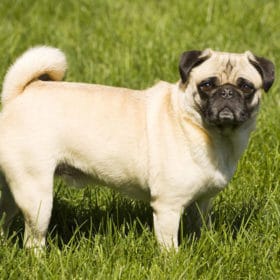 Pug
Pug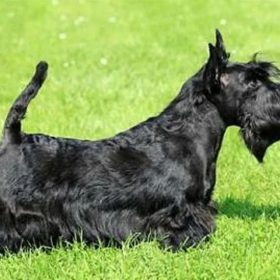 Scottish Terrier
Scottish Terrier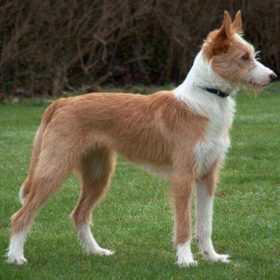 Portuguese Podengo
Portuguese Podengo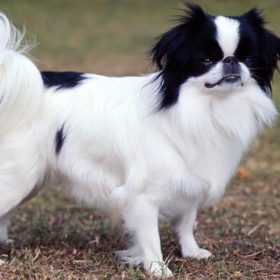 Japanese Chin
Japanese Chin Italian Greyhound
Italian Greyhound Shikoku
Shikoku